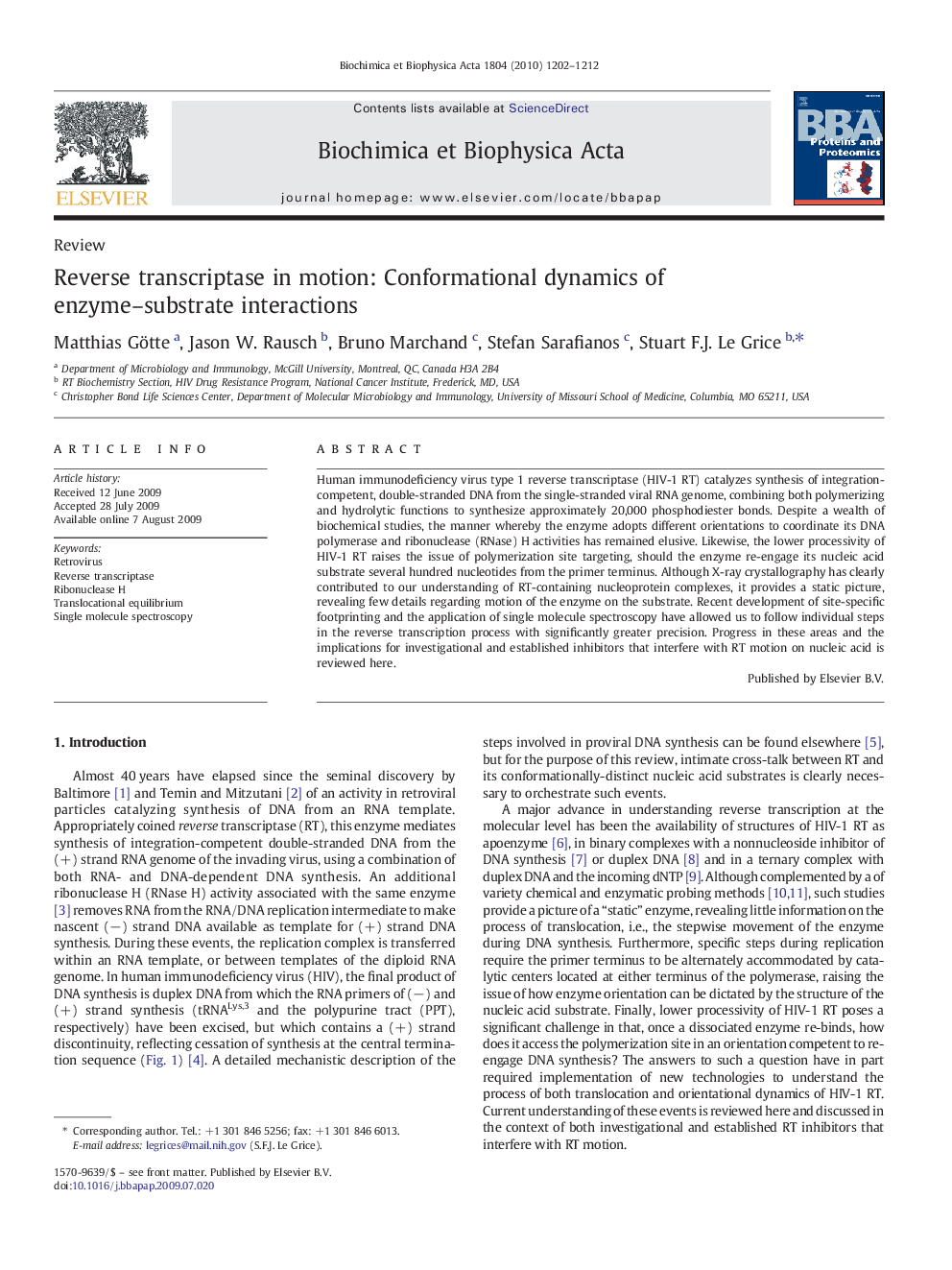| Article ID | Journal | Published Year | Pages | File Type |
|---|---|---|---|---|
| 1178856 | Biochimica et Biophysica Acta (BBA) - Proteins and Proteomics | 2010 | 11 Pages |
Human immunodeficiency virus type 1 reverse transcriptase (HIV-1 RT) catalyzes synthesis of integration-competent, double-stranded DNA from the single-stranded viral RNA genome, combining both polymerizing and hydrolytic functions to synthesize approximately 20,000 phosphodiester bonds. Despite a wealth of biochemical studies, the manner whereby the enzyme adopts different orientations to coordinate its DNA polymerase and ribonuclease (RNase) H activities has remained elusive. Likewise, the lower processivity of HIV-1 RT raises the issue of polymerization site targeting, should the enzyme re-engage its nucleic acid substrate several hundred nucleotides from the primer terminus. Although X-ray crystallography has clearly contributed to our understanding of RT-containing nucleoprotein complexes, it provides a static picture, revealing few details regarding motion of the enzyme on the substrate. Recent development of site-specific footprinting and the application of single molecule spectroscopy have allowed us to follow individual steps in the reverse transcription process with significantly greater precision. Progress in these areas and the implications for investigational and established inhibitors that interfere with RT motion on nucleic acid is reviewed here.
